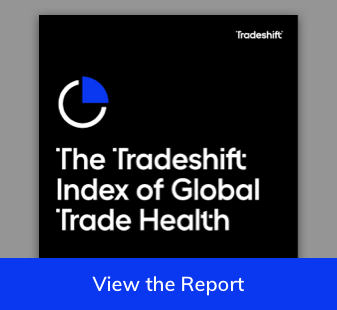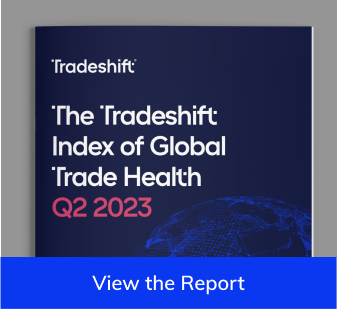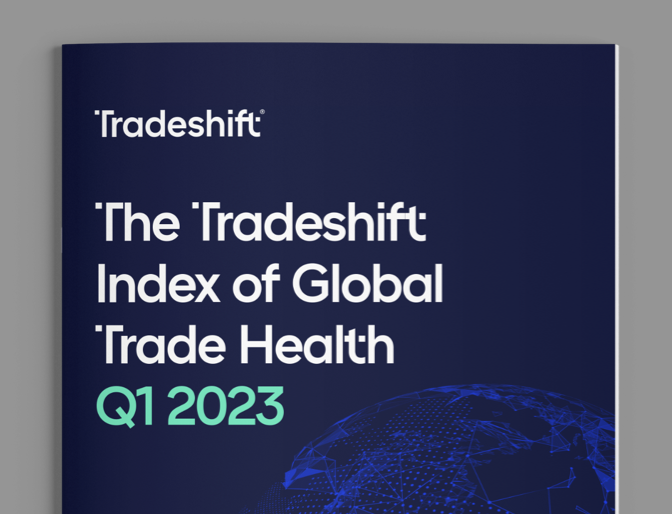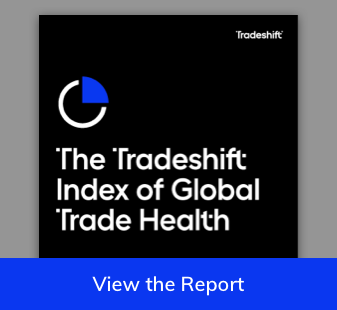The Tradeshift Index of
Global Trade Health Q2 2024
Q2 2024 report
Reality hits – but is this a bad thing?
After two straight quarters of strong growth, the latest results from our Index of Global Trade Health suggest a pause in the upward momentum. Should this cooling off be concerning, or is this simply the natural levelling out after such acceleration? Could it even be a blessing in disguise?
Evidence of a two-speed recovery is mounting.
Global trade activity remained three points below the expected range in Q2, suggesting that the recovery momentum is stabilizing rather than accelerating.
Order volumes dipped to six points below the expected range in Q2, having peaked at five points above anticipated levels at the end of 2023. Alarming though this may seem, a cooler rate of recovery may benefit supply chains in the long run, allowing them more opportunity to adapt to a new rhythm.
Evidence of a two-speed recovery is becoming more apparent. The US is exceeding expectations while the Eurozone is lagging three points below the baseline. Europe appears to be experiencing the macroeconomic effects of the ongoing Ukraine conflict and sluggish demand for manufactured goods.
Activity across Chinese supply chains continues to grow above the expected range, but a host of new players are challenging its pre-eminence as the world’s manufacturing hub. Vietnam, Malaysia, India, and Mexico are among the territories benefiting the most from an accelerating drive by Western companies to reduce their reliance on China.
Adaptive and digitized procurement
The way forward
Navigating today’s complex global trade environment requires more agility and technological advancement, particularly in procurement processes.
Geopolitical tensions and economic fragmentation have created a demand for swift, informed decision-making and flexible supply chains. Procurement teams must rethink their strategies to build more resilient supply chains that can withstand disruptions. This involves expanding and managing a broader network of supplier relationships.
However, this transition is fraught with challenges. Many organizations are experiencing firsthand the difficulties of scaling existing processes to accommodate an increasingly diverse range of suppliers. One critical hurdle is integrating procurement and finance systems, which underpin key aspects of relationships between large organizations and their extended supplier bases.
As executives are increasingly focused on removing latency and friction from the procurement process, digitalization projects that address the current disconnect between procurement and finance will be crucial in enabling companies to adapt to changing conditions
Purpose and Methodology behind the Tradeshift Index of Global Trade Health
Understanding the Index
Tradeshift’s Index of Global Trade Health analyzes anonymized B2B transaction volumes on its platform, offering timely perspectives on how external events are impacting global commerce.
By acknowledging the complexity of global supply chains, the report serves as a valuable snapshot, complemented by third-party data and expert insights.
The methodology
The Index compares B2B transaction volumes against a baseline – one which is created by analyzing medium-term seasonal trends in the transaction data that flows across our platform – providing insights into sectoral and geographical volatility.
While small revisions may occur to enhance accuracy, the Index aims to offer an extensive understanding of global trade dynamics.
About Tradeshift: Redefining business commerce
Tradeshift is a leading business commerce platform, revolutionizing how buyers and suppliers connect, transact, and grow.
With expertise in e-invoicing, AP automation, and innovative B2B marketplaces, Tradeshift fosters economic opportunities worldwide.
The platform hosts a rapidly growing community of buyers and sellers in over 190 countries.
Past Reports
Q1 2021
Trade chasm: Has the Pandemic brought buyers and sellers closer together or pushed them further apart?
Other Links
As Trade Volume Increases, Survey Indicates that U.S. Suppliers Are Cautiously Optimistic
Will COVID Bring Buyers and Their Sellers Closer?
The Post-Pandemic Supply Chain: Looking Back to Move Ahead




